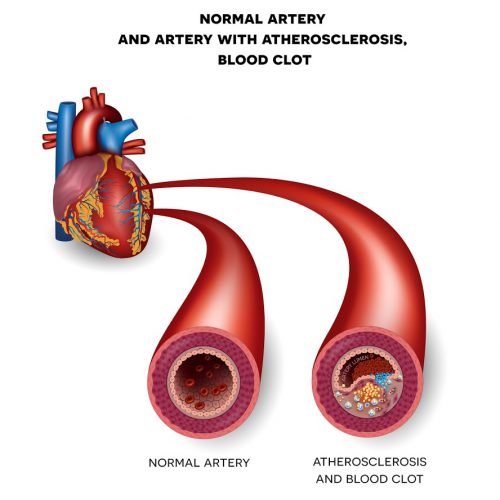What Happens When You Have a Blocked Artery in Your Arm
Blocked arteries can cause serious problems when they prevent blood from reaching different parts of your body, but the effects will depend on which area is affected. A blocked artery in your arm can cause pain and other symptoms that may affect your daily life.

What Causes Blocked Arteries?
Blocked arteries are usually caused by a condition known as atherosclerosis. It happens when fatty material builds up inside the arteries, gradually making them narrower and harder for blood to flow through. Atherosclerosis is more likely to happen if you have high cholesterol or blood pressure, or if you smoke. However, anyone could be affected by blocked arteries and the problem will often remain hidden as the fatty plaque gradually accumulates inside the arteries. Atherosclerosis can also increase the risk of blood clots forming, which could suddenly block the flow of blood.
You might not know there is a problem until the blockage starts to affect the blood flow. The effects of the blockage will depend on how severe it is and where in your body it is located. A blocked coronary artery in the heart can result in a heart attack while a blockage in the carotid artery that leads to the head could cause a stroke. If the blockage is in a peripheral artery that leads into an arm then it can cause different kinds of symptoms.
Signs of Blocked Artery on the Arm
When a blockage forms in an artery in your arm, it could cause problems if it becomes severe enough to limit the blood supply to the limb. The symptoms can develop gradually, but they may also appear suddenly if the artery has been blocked by a clot.
You might notice the following symptoms if the artery in your arm is blocked:
- Pain
- Heaviness
- Cramps
- Skin that feels colder than usual
- A weaker pulse in your arm
- Increased sensitivity to the cold
- Weakness or loss of muscle
Treatments for Blocked Arteries on the Arm
Blocked arteries can usually be diagnosed based on your symptoms, a physical examination of the arm to check on the blood flow, and the results of imaging tests such as ultrasounds or angiograms that enable your doctor to locate the blockage and learn more about it. Based on these results, your doctor might recommend the following types of treatments:
- Medication and lifestyle changes to prevent the blockage from getting worse
- Medication to reduce pain in the affected arm
- Surgical procedures to remove or bypass the blockage, or to strengthen or widen the affected artery
You might also need treatment to reduce the risk of a heart attack or stroke if arteries in other parts of your body are also affected by atherosclerosis.
If you have symptoms of blocked arteries then it is important to talk to a doctor. Even if you aren’t experiencing any symptoms of atherosclerosis, you can still visit Cardiac Screen for heart screening. We can check for any hidden health problems and advise you on what you can do to prevent blocked arteries.







